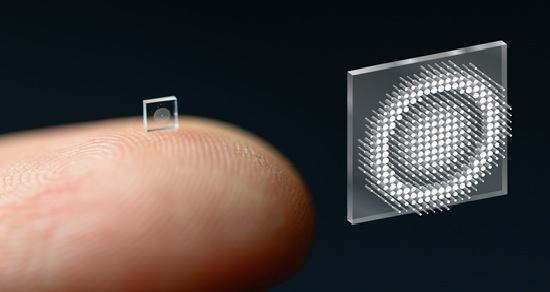Camera The Size of a Salt Grain that can Capture High Quality Images
Compact camera lenses are not only used for smartphones but also for medical devices that are used by doctors and medical practitioners to perform various procedures. The biggest example is the endoscopy process in which doctors insert tiny cameras into a patient’s body to capture images of internal organs. So, to design more advanced devices for such medical procedures, a team of researchers has developed a tiny “Neural Nano-Optics” camera that is as small as a grain of salt. [1]

Figure 1. Camera The Size of a Salt Grain that can Capture High Quality Images
Figure 1 shows an ultra-compact camera equivalent to the size of a coarse grain of salt has been developed by researchers at Princeton University and the University of Washington. This creation could allow for small robots to sense close-proximity surroundings and potentially help doctors detect problems in the human body.
This micro-camera has limitless potential, having overcome past problems whereby it captured distorted and fuzzy images with a limited field of view. Now the camera can produce crisp, full-color images on par with that of a conventional compound camera lens, 500,000 times larger in volume than this micro system. [2]
Metasurface Tech
Traditional cameras use a curved glass/plastic lens layer for bending the incoming light rays into focus. The new optical system instead leverages metasurface, a type of artificial 2D metamaterial that provides effective surface impedance.
Just half a millimetre wide, the metasurface is covered with nearly 1.6 million cylindrical posts, with each post having a unique geometry and function like an optical antenna.
Based on silicon nitride, the metasurfaces are compatible with standard semiconductor manufacturing methods used for computer chips, enabling mass-production at a lower cost than the lenses in conventional cameras.
Machine learning-based algorithms enhance the signal processing of these posts in natural light conditions so that high-quality images with a wide field of view get produced on interaction with light.
Future Improvements
Besides optimised image quality, the researchers want the camera to perform object detection and other types of sensing for medicine and robotics. There is also a plan to use such ultracompact imagers for creating ‘surfaces as sensors’.
“We could turn individual surfaces into cameras that have an ultra-high-resolution, so you wouldn’t need three cameras on the back of your phone anymore, but the whole back of your phone would become one giant camera. We can think of completely different ways to build devices in the future,” said Felix Heide, assistant professor of computer science at Princeton. [3]
References:
- https://beebom.com/camera-lens-size-of-salt-grain-capture-high-res-color-images/
- https://www.digitalcameraworld.com/news/this-cameras-is-the-size-of-a-grain-of-salt-yet-it-produces-high-res-color-images
- https://www.electronicsforu.com/news/whats-new/camera-the-size-of-a-salt-grain-that-can-capture-high-quality-images
Cite this article:
Thanusri swetha J (2022), Camera The Size of a Salt Grain that can Capture High Quality Images, pp. 61

